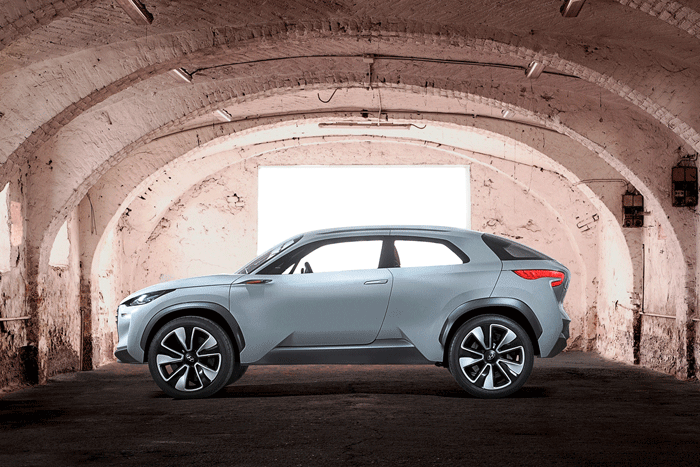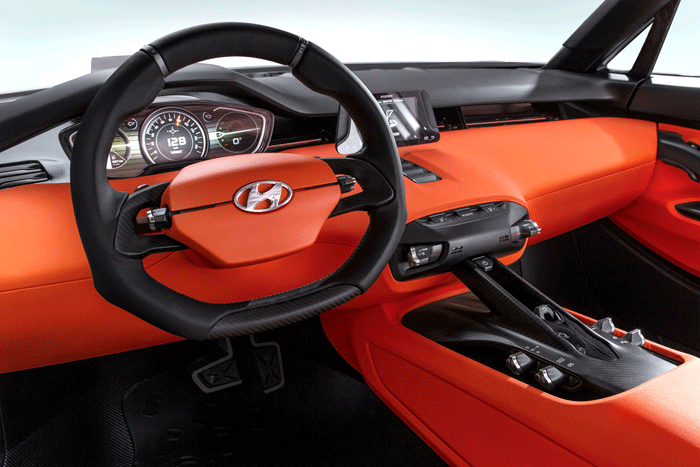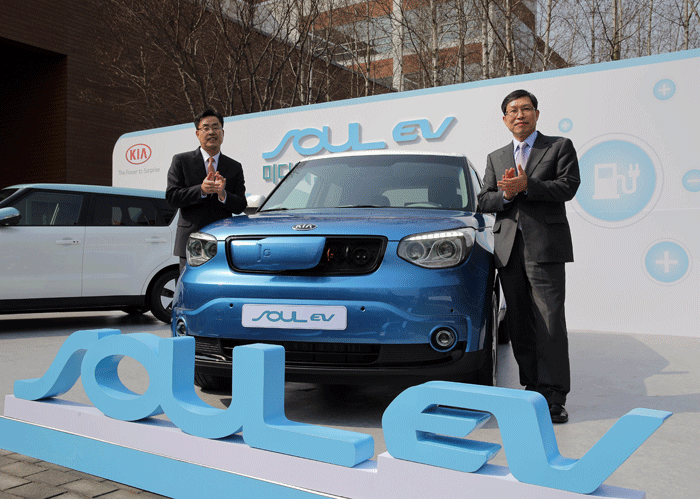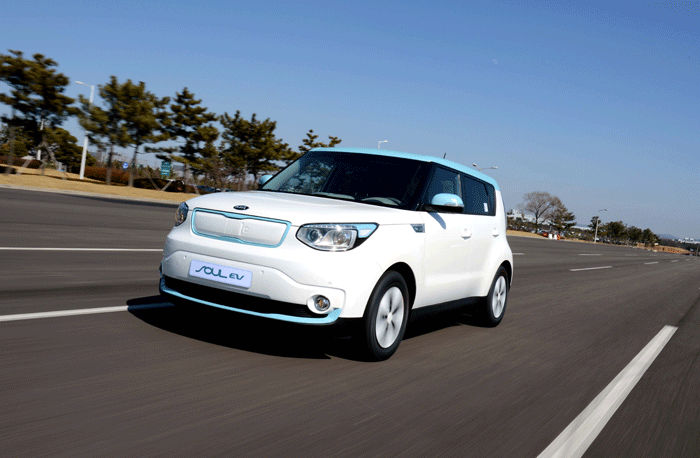At Geneva Motor Show 2014
Hyundai Motor Co., South Korea's largest carmaker, made official presentation of its Intrado fuel-cell concept vehicle that showcases the brand's new design language and technology that found its way into production vehicles down the line at the Geneva Motor Show that opened on March 8. 2014 in Switzerland.
The car has been created by its technical and design office at Russelsheim, Germany, in cooperation with Namyang R&D Center which has played a leading role as a mecca in the development of new models for Hyundai.

Located approximately 40 kilometers southwest of Seoul, the center was constructed in 1993 on a lot of 3.47 million square meters reclaimed from the sea.
The center started to play a key role in 2003 as Hyundai Motor’s Ulsan R&D center and Kia Motors’ Sohari R&D Center were combined and moved into Namyang.
The name Intrado is borrowed from the underside of an aircraft's wing that produces lift, the carmaker said.
Hyundai said that the concept, also called the HED-9, features the company's trademark hexagonal grille and is the latest interpretation of its fluidic sculpture 2.0 design language that was first shown in the all-new Genesis premium sedan.
The company added that the new crossover coupe makes use of latest lightweight yet strong materials and advanced manufacturing techniques that can greatly enhance, driving dynamics, fuel efficiency and overall looks. It will be powered by a compact fuel cell system coupled with a 36-kilowatt lithium-ion battery that can give it a range of 600 kilometers on a full charge of hydrogen, the carmaker claimed.
Super lightweight steel made by the carmaker's affiliate and carbon fiber frames are some of the innovations to be incorporated into the car. The structure is not only lighter, but it is better able to deal with crashes and easier to repair, Hyundai said.

The flagship company of Hyundai Motor Group, world's fifth-largest carmaker, did not say when the production version of the Intrado will reach consumers, but it will likely come out after the low-volume Tuscon fuel cell electric vehicle already in production.
A hydrogen vehicle is a vehicle that uses hydrogen as its onboard fuel for motive power. Hydrogen vehicles include hydrogen fueled space rockets, as well as automobiles and other transportation vehicles. The power plants of such vehicles convert the chemical energy of hydrogen to mechanical energy either by burning hydrogen in an internal combustion engine, or by reacting hydrogen with oxygen in a fuel cell to run electric motors. Widespread use of hydrogen for fueling transportation is a key element of a proposed hydrogen economy.
Hyundai Motor Group Chairman Chung Mong-koo has stressed the importance of innovative designs and technology in order to become a leading global brand, and this indicates the direction in which the world’s fifth-largest automotive group is headed.
With this in mind, the group has upgraded its research and development facilities and design centers across the globe in recent years..
The group has unveiled much-anticipated new models such as the all-new Genesis luxury sedan, the Sonata family sedan and the Soul EV to news media at the center ahead of their official launch, instead of simply holding a launch event at a luxury hotel.
Namyang R&D Center consists of various districts, mainly for design and engineering, performance and drive-testing facilities and center for future automotive technologies, which have about 10,000 employees from engineers to designers.

The center is very strict with security, as it develops designs for new models and new technologies. All visitors are required to put stickers on the camera lenses on their mobile phones and cameras have to be handed in during tours.
One of the radical changes at the group seems to come from innovative designs, given the new looks of its latest models.
The chairman recently urged greater focus on developing innovative designs to match the performance of vehicles.
For example, Hyundai Motor has recently upgraded its original design concept.
It was first applied to the new Genesis, which made its debut in November, and also to the seventh-generation of the Sonata.
It was obvious that the company’s in-house technology prowess is the heart of the current success, but the ambition doesn’t seem to stop there. Now, it seems to aggressively prepare for the future in which they will lead the industry.

The center has devoted a large portion of its resources to develop next-generation materials and future cars.
“As the world faces various environmental crises, global automakers have been fiercely competing in the development of green cars, which is critical for their survival now,” Lee Ki-sang, senior vice president at the ECO Technology Center, said, when unveiling the Soul EV on March 11.

